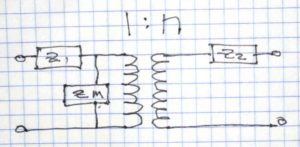EFHW exploration – Part 1: basic EFHW explored the basic half wave dipole driven by an integral source as a means of understanding that component of a bigger antenna system.
The EFHW can be deployed in a miriad of topologies, this article goes on to explore three popular practical means of feeding such a dipole.
The models are of the antenna system over average ground, and do not include conductive support structures (eg towers / masts), other conductors (power lines, antennas, conductors on or in buildings). Note that the model results apply to the exact scenarios, and extrapolation to other scenarios may introduce significant error.
End Fed Zepp with current drive
A very old end fed antenna system is the End Fed Zepp. In this example, a half wave dipole at λ/4 height is driven with a λ/4 600Ω vertical feed line driven by a balanced current source (ie an effective current balun).

Above is a plot of the current magnitudes. The currents on the feed line conductor are almost exactly antiphase, and the plot of magnitude shows that they are equal at the bottom but not so at the top. The difference between the currents is the total common mode current, and it is maximum at the top and tapers down to zero at the bottom. Icm at the top is about one third of the current at the middle of the dipole. Continue reading EFHW exploration – Part 2: practical examples of EFHW
Last update: 14th April, 2024, 1:35 PM









